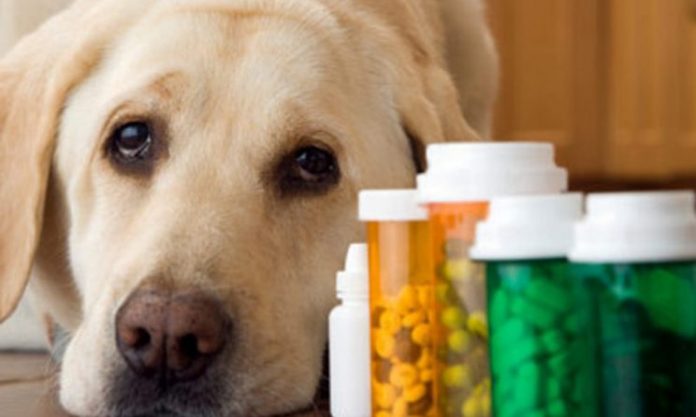In light of recent events and increasingly troubled world politics, a major disaster or cataclysmic natural disaster, more people are increasingly concerned. In the event that this would occur, it is important for our families and their well-being to be prepared and ready to cater for every eventuality. The bulk of pain medications, basic first aid and general items of self-care can be purchased from drug stores on the shelf. It is relatively easy to store food, water and family supplies, but it isn’t such a cuts and dries situation to procure prescription medicines like antibiotics.
Antibiotics treat specific bacterial infections, regardless of the infected species, whether human, canine, bovine or other. Due to interference with various organisms and bacteria causing the primary disease, doctors and veterinarians use different antibiotics for different types because some of these medications cause adverse side effects or toxicity in some animals. Similarly, certain antibiotics work in a variety of species although their doses can differ. Doxycycline is one example.
Human patients are often diagnosed with veterinary medicines throughout the developing world for a number of reasons, including costs and access to prescription drugs. The waiver of animal medications for human consumption is illegal for anyone, veterinarian or otherwise. One of the main reasons behind this law is that it is actually too much for narcotic medications to allow this activity to misuse pain medicines and anesthetics. However, those who actually use veterinary medicines, especially those working with animals, are not unusual. Most animal prescriptions are generic alternatives of human medicines, but not even emergency drugs can legally be dispensed from these products by your veterinarian. Another reason for these regulations is manufacturing hygiene. The United States Food and Drug Administration does not require the same strict guidelines for manufacturing production hygiene for animal antibiotics or food additives as for human medicines. Impurities that could pose a health concern for humans but not for their intended animal consumers may be present in these compounds.
Related: How to Make the Most Powerful Natural Antibiotic
How To Use Veterinary Drugs
1. If you consider the emergency supply of antibiotics, research is important, which is why you are reading this article. You and your family want to ensure their safety in a post-apocalyptic set-up and make informed health decisions.
2. You should ensure that the active ingredient is the actual antibiotic despite the brand name.
3. Dosage is another important consideration, you should compile a dosage chart for the medications you have stocked, not just antibiotics but also any other prescription medications and keep this with the medication for easy access in an emergency situation. Pay close attention to the concentration of active ingredient and look for a product with minimal fillers.
4. Be cautious when sourcing medication, for example, the quality of products sold by some internet pharmacy companies may be sub-par or even counterfeit. Look for the USP Verified Pharmaceutical Ingredient Marks on medications. These are special coding used to identify medication, e.g. USP Pharmaceutical Grade Tetracycline on a tablet means that the concentration of the active antibiotic (tetracycline) is verified by the FDA.
5. Self-medication with prescription antibiotics without any physician’s input in our current civilization is ill-advised as you increase the risk of selecting for multidrug-resistant strains of bacteria. You should follow your doctor’s directions for taking medications, to minimize the development of resistance in bacteria thus reducing the efficacy of our medications in the event of a disaster. The information in this article should only be used in the event of a crisis when prescriptions are not available.
Related: What You Should Know Before Stockpiling Antibiotics
Classes of Antibiotics
The diagnosis and subsequent treatment are another problem for self-medication. If proper diagnosis cannot be made, therefore, the right antibiotic or dose can not be obtained. Using the wrong medication or dosage may jeopardize the health or life of yourself or other person.
Penicillins
/penicillin-56a26f733df78cf77275aedb.jpg)
/penicillin-56a26f733df78cf77275aedb.jpg)
There are a variety of variations of penicillin, including amoxicillin, methicillin and flucloxacillin; there are also combinations of amoxicillin/clavulanate and ampicillin/sulbactam. Penicillin was introduced in the 1940s and is used to treat a large variety of serious infections such as common ear/nose/throat, skin and respiratory infections including strep throat, Salmonella infections and pneumonia. Some individuals are fatally allergic to penicillin-based antibiotics and should be vigilant about anaphylactic reactions.
Fluoroquinolones
Do not use these antibiotics as a first choice for any infection! Use with caution in children!
Some antibiotics in this class include ciprofloxacin, levofloxacin, moxifloxacin and ofloxacin which are used for treating urinary tract infections, pneumonia and gonorrhea. A number of these drugs, due to toxicity and increasing resistance to the microbial products, have been removed from the market. Side effects are rare but can be severe, even with short-term use, including seizures, weaknesses, nausea and tendon damage.
Cephalosporins
Do not use these antibiotics as a first choice for any infection!
There are five generations of this class of antibiotic available, earlier generations have good action against streptococcal and staphylococcal infections while the newest generation treats multidrug resistant bacteria including pseudomonal infections.Allergic reactions, stomach discomfort, including nausea and diarrhea, cause adverse reaction. These antibiotics can be used to treat infections such as gonorrhea, severe skin or middle ear infections and geniturine tract infections.
Macrolides
These antibiotics are good alternatives for people allergic to penicillins and cephalosporins.
Azithromycin, clarithromycin, erythromycin and spiramycin are antibiotics of this class. These are good for treating respiratory infections like whooping cough, Lyme disease, mouth infections and syphilis. Side effects include bowel disorders, liver complications and vision issues.
Aminoglycosides
This group includes amikacin, gentamicin, neomycin and streptomycin. These antibiotics are useful in treating infections caused by Escherichia coli, Klebsiella and Pseudomonas aeruginosa and tularemia. These antibiotics are effective to treat severe bone and soft tissue infections. These drugs are not effective when they are taken by mouth, but they are useful injectable and topical, including treatment of tuberculosis and gonorrhea. Lateral effects, including hearing and kidney damage.
Sulfonamides
Perhaps silver sulfadiazine is the best known component of this class, and is widely used for burns and skin irritation. Others members include trimethoprim-sulfamethoxazole and sulfadimethoxine and are used to treat urinary tract and eye infections. Side effects include complications of the liver, diarrhea and radiation, skin rashes, and allergy symptoms.
Some helpful links are listed below:
The American Academy of Family Physicians‘ website is a good resource for educating yourself on health matters including quality cost-effective health care. Information on the interactions between medications, side effects and correct dosing is included in this website.
The best advice I can give you to plan for a SHTF scenario is to do a comprehensive analysis and select your antibiotics sources. Choose reliable or peer-reviewed data sources and be vigilant when choosing your veterinary drugs and keep medicines far away from kids at all times. Track your drug inventory periodically and securely and substitute it with a new version if it passes your expiration date.





















